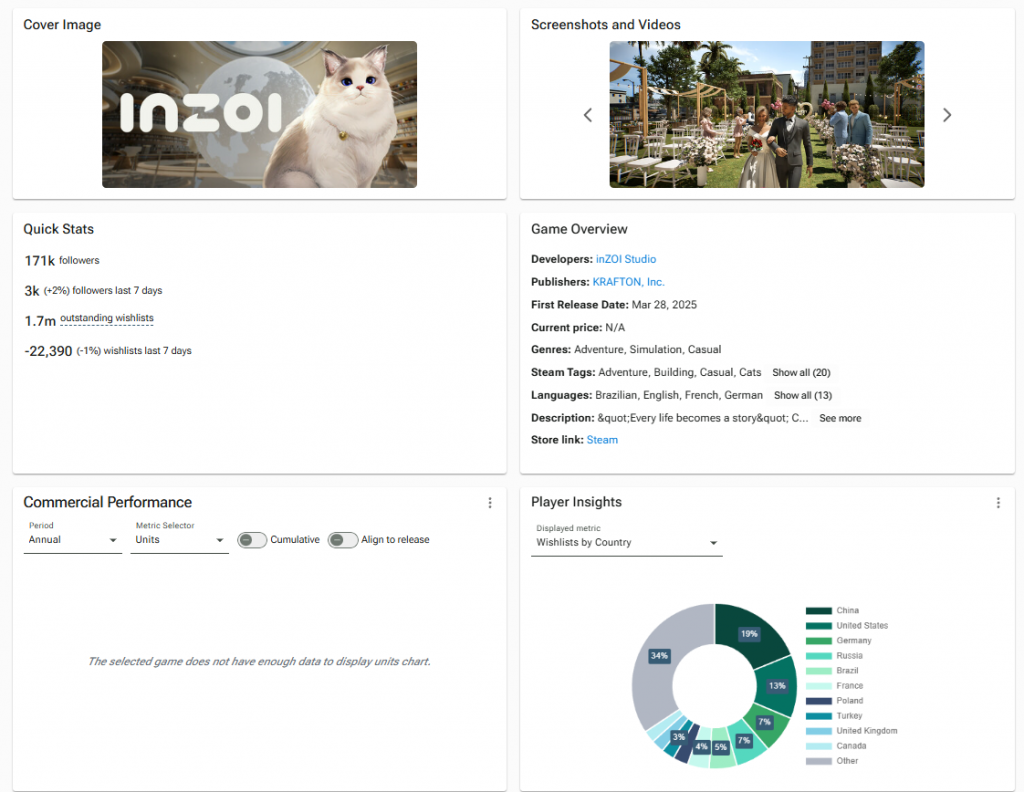
We are now showing wishlist breakdown by country estimate for unreleased (and also released) games! You can now see where the interest towards a game is coming from.

We are now showing wishlist breakdown by country estimate for unreleased (and also released) games! You can now see where the interest towards a game is coming from.
We have added a couple of much requested features to the paltform recently:
We’ve added 2 new columns to the Games Database – Month 1 and Year 1 unit sales. This allows you to have quick like-for-like comparison for launch performances.
Not only that, you can use these together with our “wishlists at launch” metric to get a better understanding of the wishlist to launch conversion ratios for the games you care about.
https://app.sensortower.com/vgi/games-database
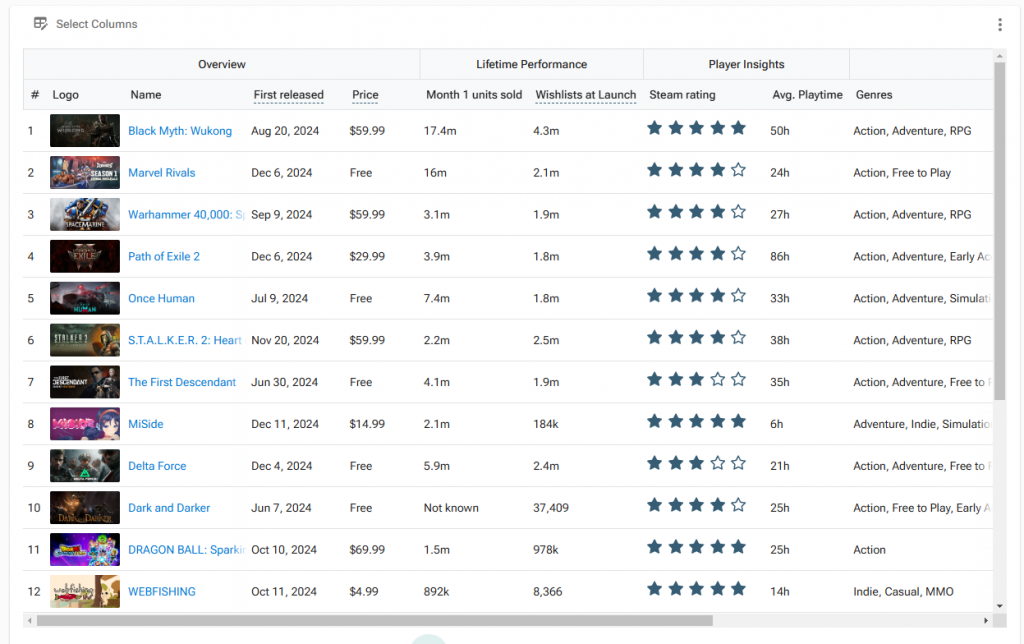
Top charts already had an option to see top CCU games. Our new DAU and MAU options add more colour to player engagement.
https://app.sensortower.com/vgi/top-charts
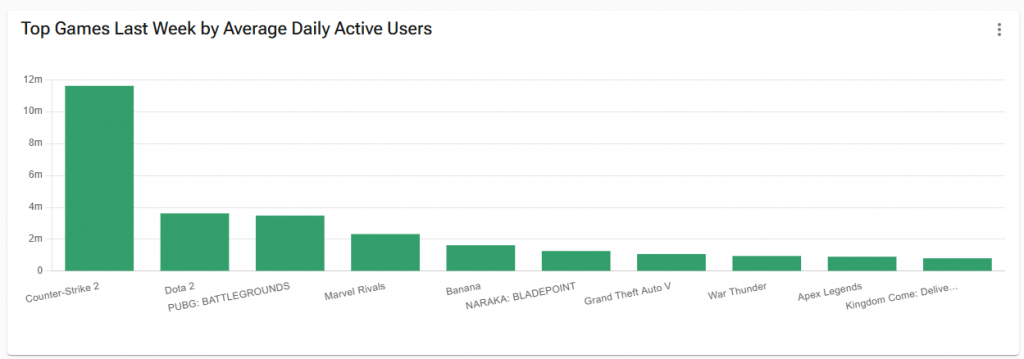
You will be now able to see when the actual Steam Store page was created for majority of games, including how long it took them to get from Store page creation to launch.
This is a super useful metric for understanding how to optimize the Steam page and how early other games release their Steam pages pre launch.
https://app.sensortower.com/vgi/game/kingdom-come-deliverance-ii

We’ll be bringing you more new features shortly! Stay tuned.
Video game engines have evolved significantly over the past decade. While mobile game development has long been dominated by third-party engines—most notably Unity—the same was not true for PC and console games.
Until recently, the majority of large titles were developed using in-house, custom-built engines. Not anymore.
– State of game engines today
– Game engine market share trends over time
– Forecasting the future trends
– Did Unity’s pricing debacle impact market share?
– The growth of Unreal Engine
– Is Godot really winning share?
– Game engine shares by sub-genre of games
Download the free PDF instantly without any email sign-up required: The Big Game Engines Report of 2025
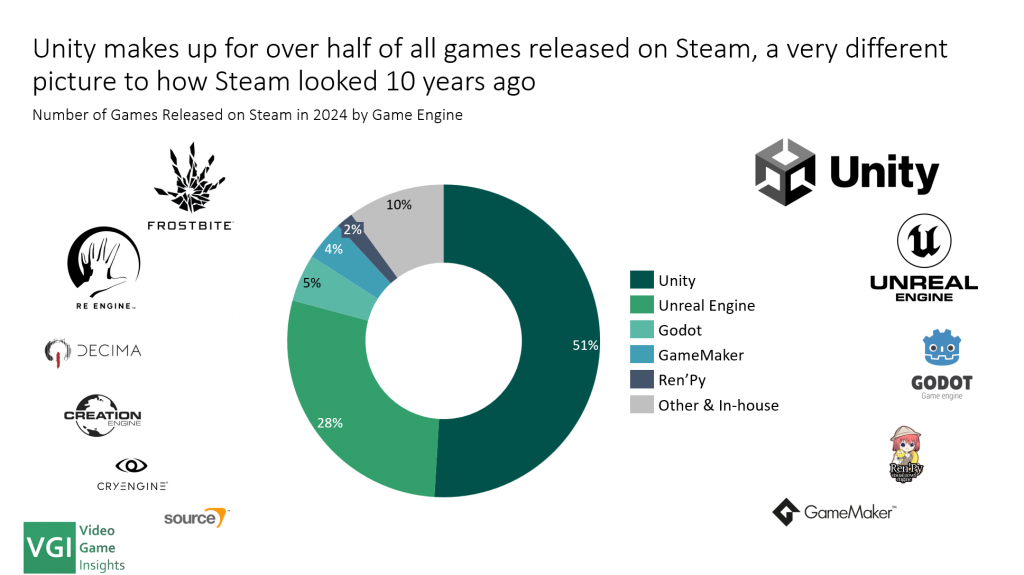
Download the free PDF instantly without any email sign-up required: The Big Game Engines Report of 2025
Video Game Insights provides a comprehensive data and intelligence platform for developers, publishers and investors.
Use the menu on the left to explore our tools or search for any game or games company in the search bar above.
Reach out to us at support@sensortower.com to learn more about the platform and get a product demo!
We have just added game engines as a datapoint to all games. As a business subscriber, you’ll be able to see the game engines for most games with >10k sales.
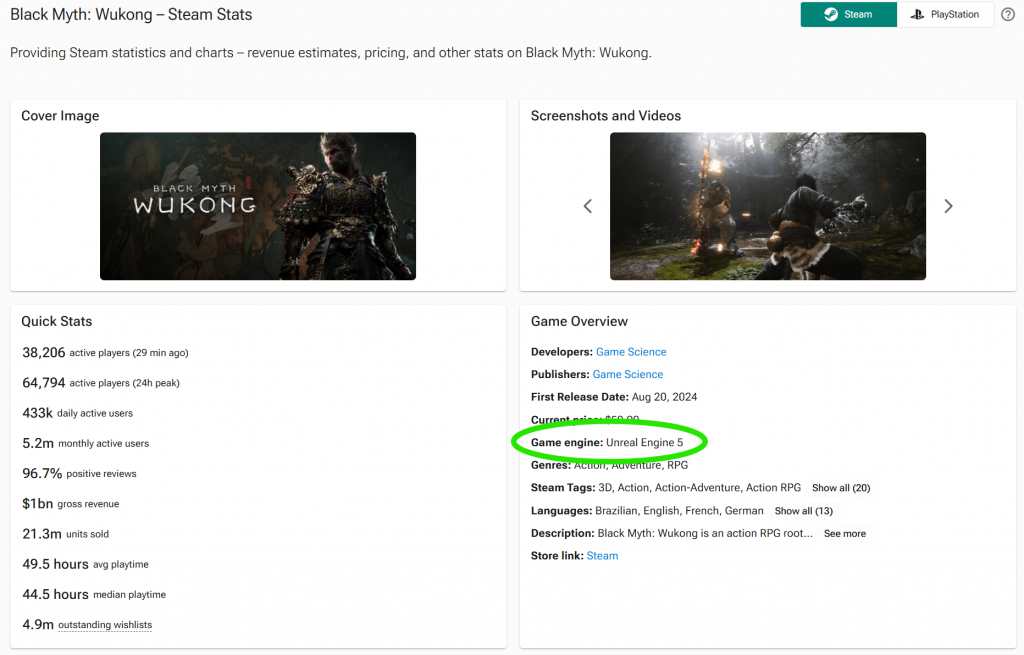
Business subscribers will also be able to see game engines as a separate column in the Games Database.
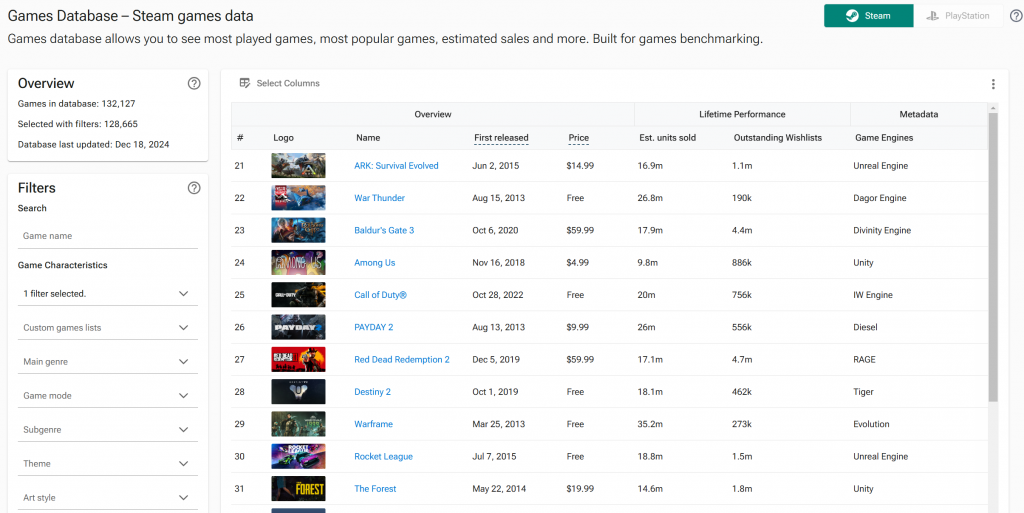
You’ll also be able to filter games based on the engines!
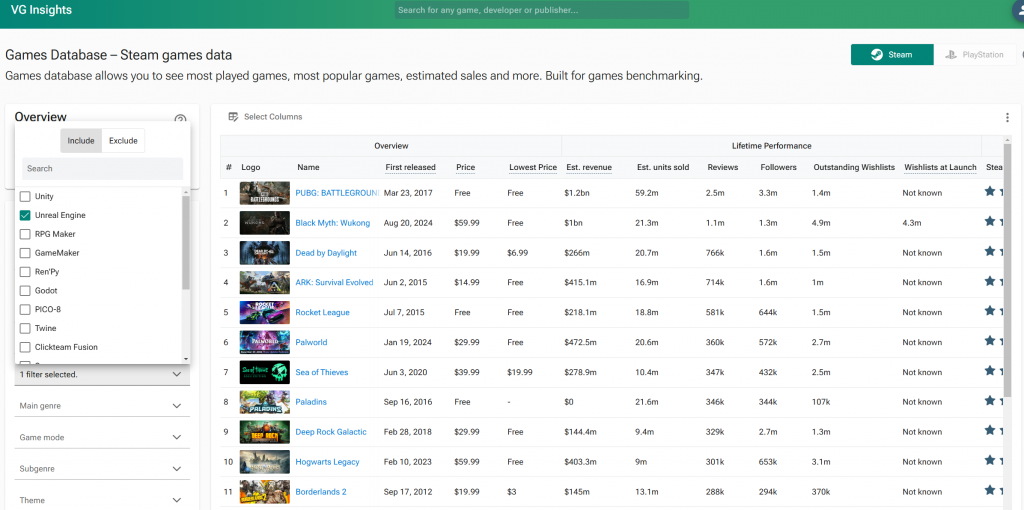
Our wishlist estimates have been the best in class since we launched them back in March. Well, they’ve just got a bit better. We have had to tweak our methodology slightly and this has resulted in even smaller variance VS actual numbers in our internal checks.
Key changes:
This impacts all wishlist numbers we show. We encourage you to update any analysis that relied on the old numbers.
Note that we try and keep any large scale estimation changes to a minimum, but in order to provide you with the best estimates possible, we do occasionally need to make these changes.
We will make sure to give a heads up in the future rather than report any changes retroactively.
The global indie games market has hit new heights in 2024. Our Global Indie Games Market Report 2024 offers an in-depth analysis of the indie game landscape. Discover key data on market growth, top-performing games, and trends shaping the future of indie gaming.
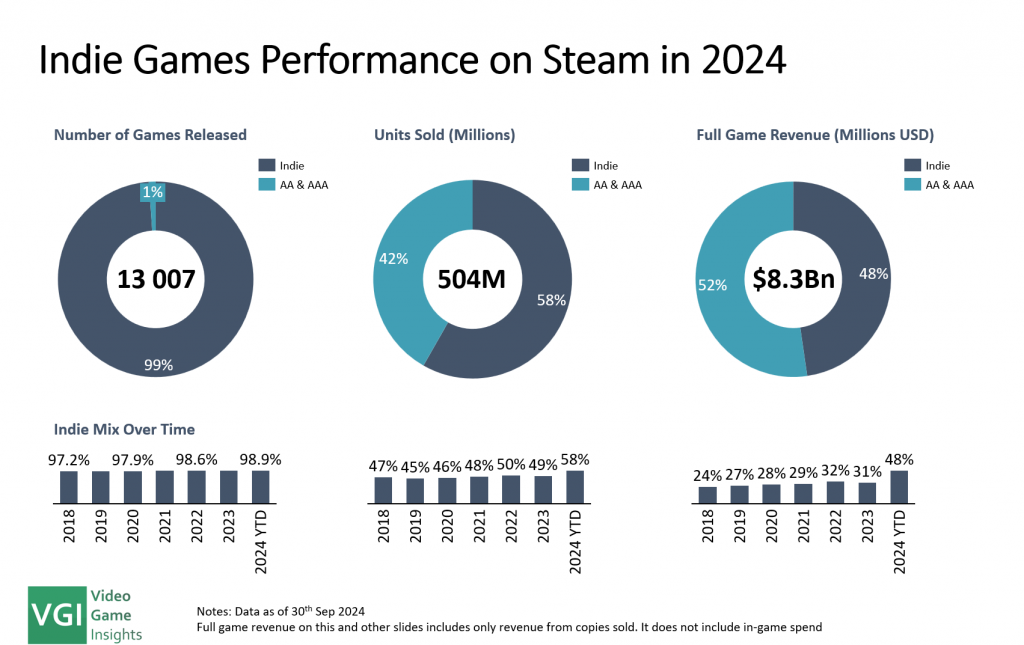
Download the free PDF instantly without any email sign-up required: VGI Global Indie Games Market Report 2024
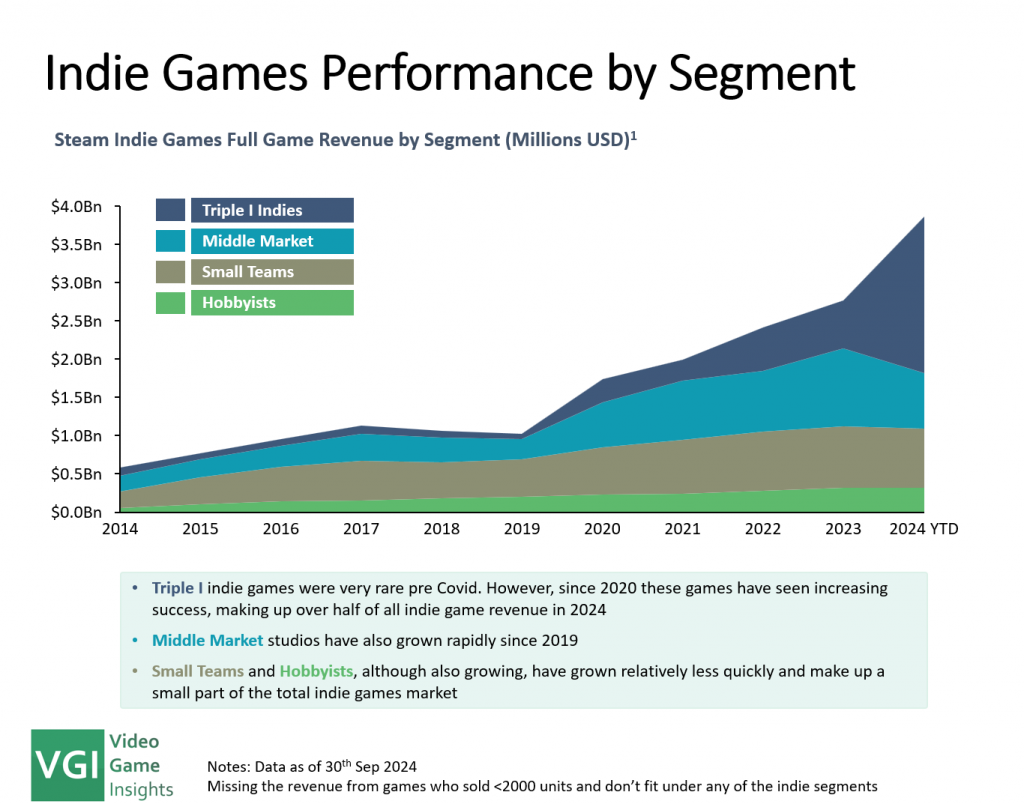
Download the free PDF instantly without any email sign-up required: VGI Global Indie Games Market Report 2024
Video Game Insights provides a comprehensive data and intelligence platform for developers, publishers and investors.
Use the menu on the left to explore our tools or search for any game or games company in the search bar above.
Reach out to us at support@sensortower.com to learn more about the platform and get a product demo!
We’ve just released our estimates for daily active users (DAU) and weekly active users (WAU) for Steam games.
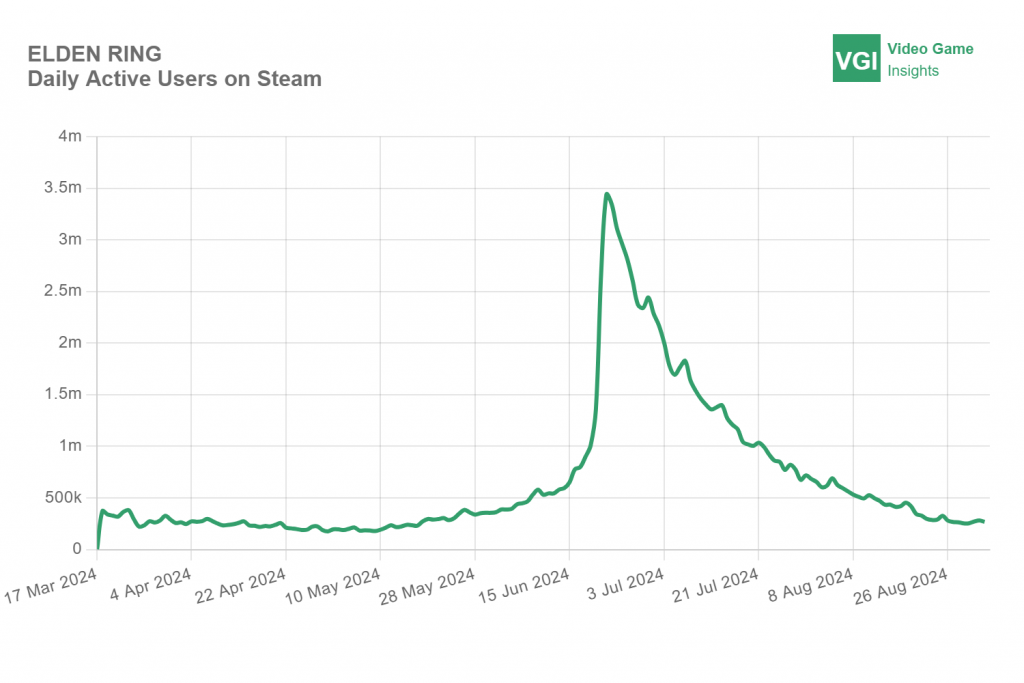
You’ll be able to see these metrics for any game with at least 100k units sold by going on their individual games page and using the “historical data” section.
Note that these metrics do tend to give a highly correlated view to the much used concurrent users (CCU) metric on Steam. However, DAU and WAU are much more used in corporate environments and serve as a more practical input for most modelling purposes.
Additionally, the DAU metric sets us up for the upcoming PlayStation data where you will be able to start comparing PC & PS DAU metrics and see what the platform mix looks like for multi-platform games.
We’re excited to roll out a cool update to our Player Overlap feature, now with even more detailed insights into player behaviour.
Using NBA 2K23 as our example, let’s explore a part of this further, just like we did in our last post about this feature.
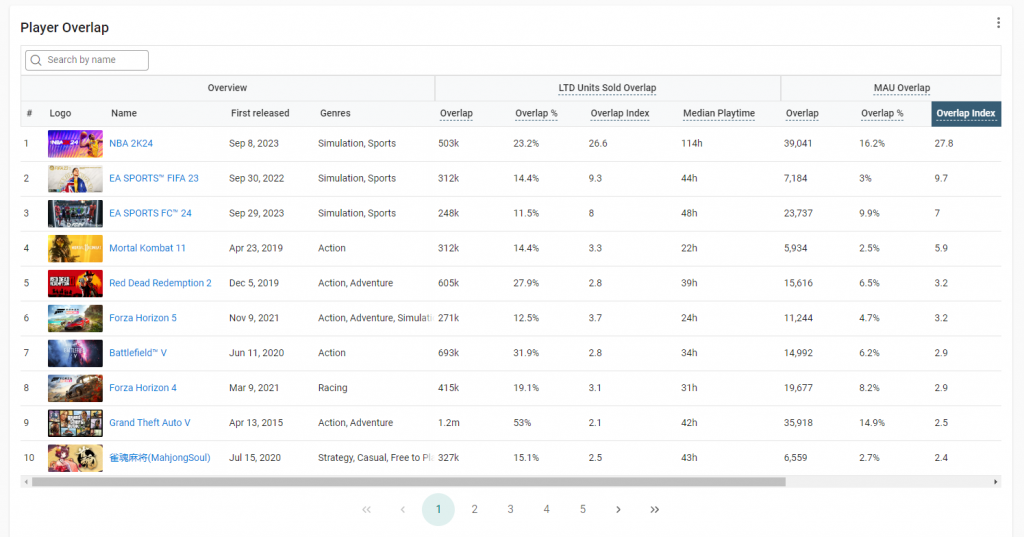
We’ve also introduced wishlist-related metrics for more depth, available only for unreleased games. Learn more about them below:
These new metrics offer our Business subscribers deeper insights into player behavior, helping refine marketing strategies and uncover market opportunities.
Do you have a specific list of games you’d like to track or summarise data for? Well, now you can (finally)!
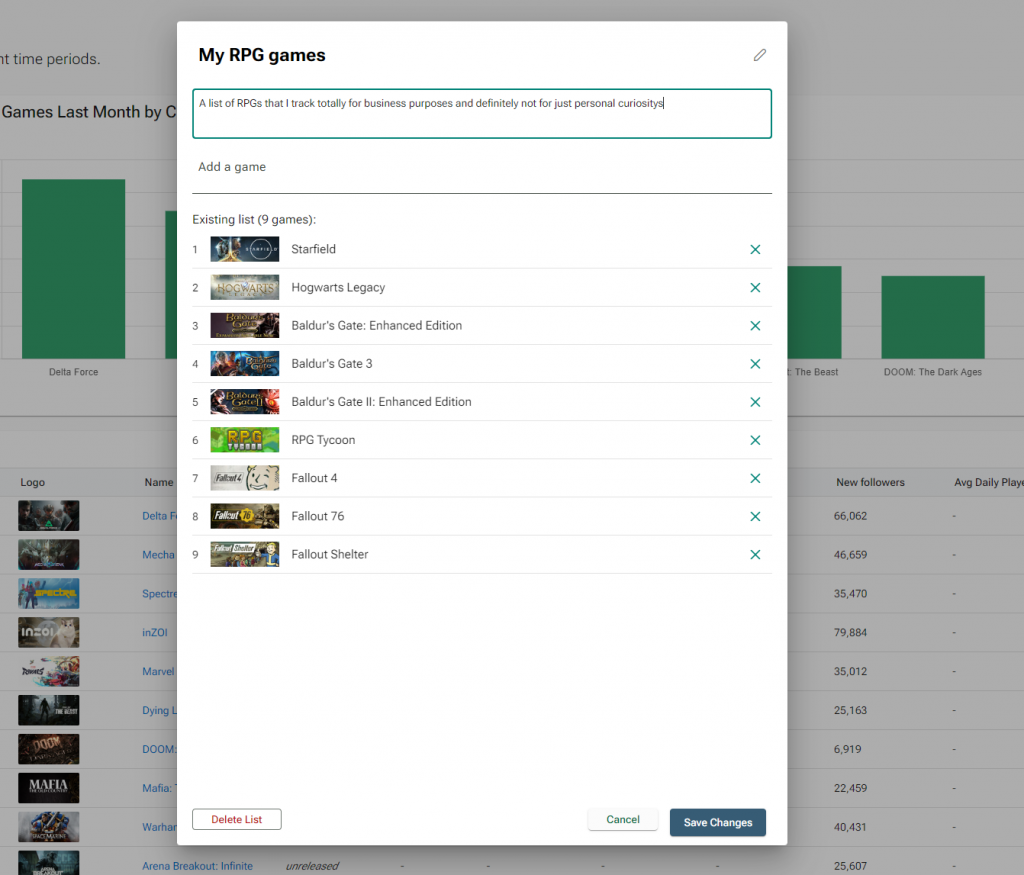
Indie and Business subscribers are now able to set up custom lists with whatever games they’d like. These lists can then be used on any page with filters (Games Database, Top Charts, Steam Analytics etc).
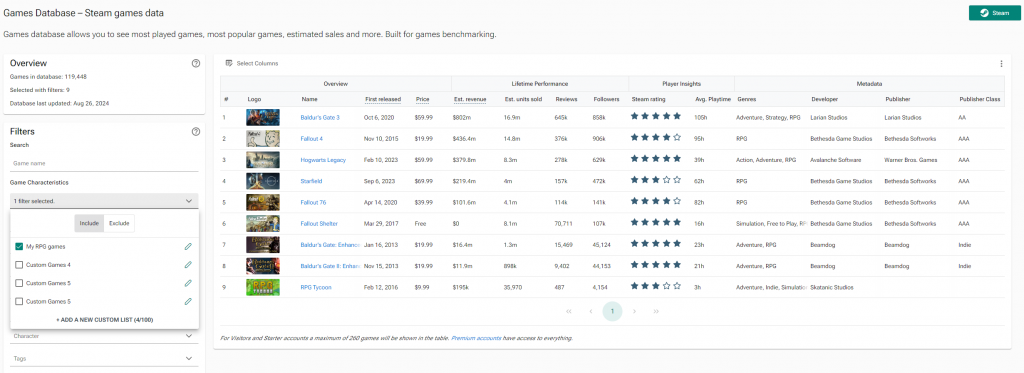
For more details, you can always reach out to us at support@sensortower.com!
We have revamped our filter system, making it easier to use and improving its functionality.
Filters are available on many pages, from Steam Analytics to Games Database and can help you narrow down a list of games or companies to look at. We’ve long had an extensive list of filters to choose from, but we’ve now made it even more powerful to use.
You can now include as well as exclude characteristics in filters. For example, you might want to see all 4x games, but exclude any turn-based games, leaving only real time 4x games in the list.
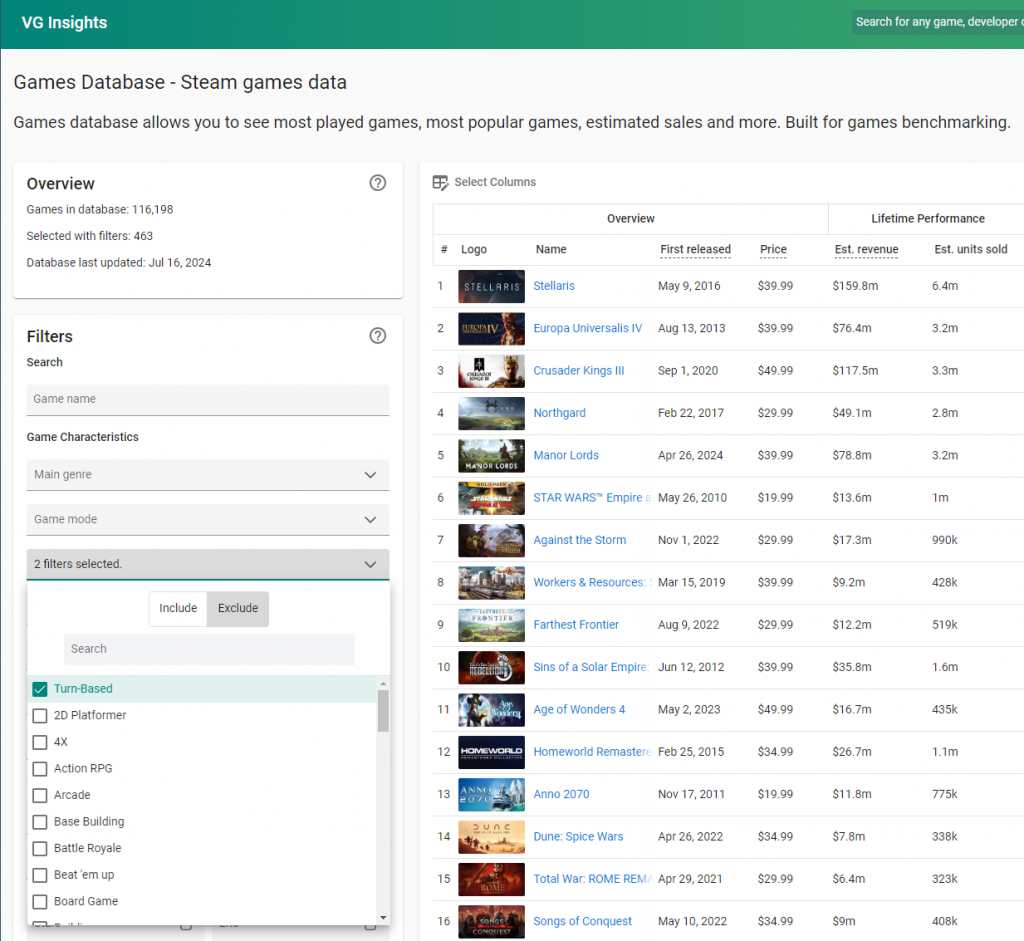
Some of our filters had tens if not hundreds of options to choose from. We have now added a search bar to make it easier to look for the particular item you’re interested in. For example, you can now find all the RPG tags with ease.

2023 saw almost 800 co-op games released on Steam, over double from five years ago.

The core principle for cooperative games is that a small group of players can work together as a team. Covid saw a peak in co-op game interest as catching up in the real world was swapped for social gaming sessions. This report explores how the co-op game popularity has trended since.
Co-op games tend to have an organic player acquisition flywheel where players persuade their friends to get the game. Therefore, co-op games tend to outperform other types of games in their performance. These organic hype cycles have become especially evident with the launches of Palworld and Helldivers 2 this year. The report looks into just how much audience attention share these games grabbed.
Download the free PDF instantly without any email sign-up required: Rise of the Co-Op Games